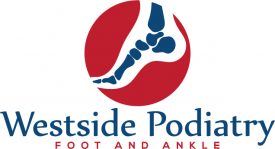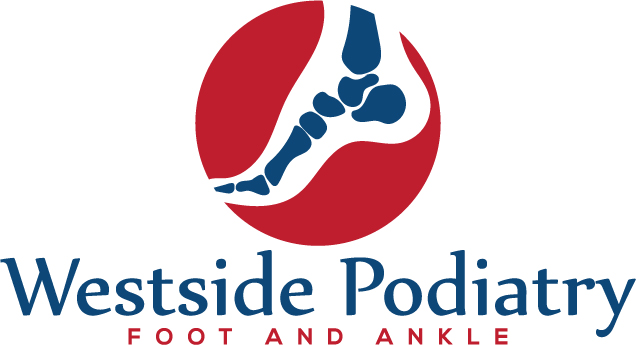Sports Related Injuries of the Foot and Ankle
Nearly any type of sporting activity has the potential for injury to the foot or ankle, even swimming. The rate of injury and location of these injuries may vary between these sports but the diagnosis and treatment of these injuries is based on common evaluation methods.
Common sports injuries can be classified as: – Toenail injuries/bruising
- Abrasions/Blisters
- Contusions
- Tendon injuries
- Muscle injuries
- Joint sprains
- Growth plate injuries in children
- Bone injury – contusion and fracture
Toenail injuries/bruising
Toenail bruising is a very common event during exercie. Black toenails or lifting of the toenails is the result of minor trauma that occurs while exercising. With each step the toes are jammed into the end of the shoe or the top of the shoe. Tightness of the calf muscles exaggerates the influence of minor repeated trauma to the toenails.
Be sure that the shoe fit is proper and stretch your calf muscles on a regular basis. If your toenails turn black or are lifting off consult your podiatrist. Toenail injuries can result in a fungal infection of the toenails, ingrown toenails or abnormal growth of the toenails.
Abrasions/Blisters
Abrasions are scrapes of the skin with the removal of the top layer of the skin. Blisters are due to excessive friction where the skin remains intact and fluid accumulates under the skin.
In the event of an abrasion the area should be cleaned with soap and water. A light bandage with an antibiotic ointment would be a good idea. Should the abrasion become red or infected seek the advice of your podiatrist.
In the case of blisters, the fluid should be drained without removing the top layer of skin. An antibiotic ointment with a mild compressive dressing should be considered. If the area becomes red or infected seek the advice of your doctor.
Blisters can be an indication of abnormal foot function. If the blisters are reoccurring in nature make an appointment with a podiatrist in your area.
Contusions
Contusions are due to blunt trauma. If the trauma results in swelling and bruising it indicates that soft tissue or bone injury has occurred. Bruising indicates the rupture of blood vessels. In this instance an x-ray should be considered.
Ice to the area will reduce the swelling and slow any bleeding under the skin in the area of injury. Consultation with a physician should be based on common sense.
Tendon Injuries
Tendon injuries are the most common sports related injury. These injuries can be caused by muscle imbalances, over aggressive playing of the sport, blunt trauma and sprains.
The most common tendon injuries are:
- Arch/heel pain injuries
- Peroneal tendon injuries on the side of the foot
- Achilles tendon injuries – Posterior tibial tendon injuries on the inside of the foot
- Extensor tendon injuries on the top of the foot
To find out more about these injuries click on the injury involved. If you do not find an article that relates to your problem make an appointment with a podiatrist in your area.
Muscle Injuries:
Muscles injuries occur because of direct trauma and over exertion in the context of muscle imbalance. When a muscle has been injured ice and mild compression may be useful. Heat will generally increase the swelling. Rest is very important in the event of these injuries. If bruising is present advice from your doctor should be obtained.
Joint Sprains:
Joint sprains occur when a joint is forced to move in an abnormal fashion or beyond their normal range of motion. Below is a list of common joint sprains in the foot and ankle.
- Big toe joint – “Turf Toe”
- Sprain of the midfoot – LisFranc’s injury
- Ankle sprains
For information on any one of these injuries click on a link above.
Growth plate injuries in children:
There are a number of common growth plate injuries in children. The growth plate is the area within a bone that provides for the proper growth of the bone. An injury to this area of the bone can result in early closing of the growth plate or abnormal growth of the bone. Below is a list of common growth plate injuries:
- Big toe injuries – “Turf Toe”
- Pain in the ball of the foot – Freiberg’s disease
- Pain on the inner side of the foot – Kohler’s disease
- Pain on the outside of the foot
- Pain in the back of the heel – Seiver’s disease
The growth plates in the foot on average close at age at 14 years in girls and 16 years in boys. Your podiatrist should evaluate any trauma or joint sprain of the foot or ankle in a child.
Bone injury – contusion and fracture:
There are two basic types of fracture to bones. The obvious type of fracture is due to direct trauma or joint sprain. The other type of fracture is called a stress fracture. Stress fractures occur because of repeated abnormal forces being generated through the bone. Some common areas of stress fracture in the foot area listed below.
- Pain in the ball of the foot – Metatarsal stress fracture
- Pain on the upper inside of the foot – Navicular stress fracture
There are many types of sports injuries. The diagnosis of these injuries is based on common diagnostic skills and modalities known to your podiatrist. The proper treatment of these injuries can make the difference between non-painful resumption of your sport or on-going pain and perhaps cessation of your activity. It is important to realize that normal healing cannot be speeded up… it can only be slowed down. Even if it means the loss of a regular season of play, it is best to be patient with your doctor and the time it requires to properly heal your injury. It is better to play again in top form rather than to stumble or never play again because you were impatient with the normal healing process.

